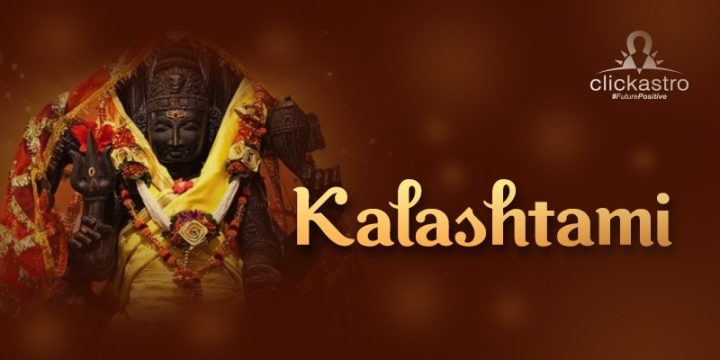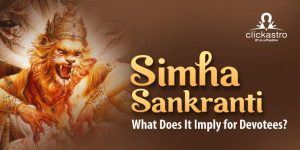Kalashtami Vrat Dates in 2024
Kalashtami is observed every month during the Ashtami tithi of Krishna Paksha. Below are the Kalashtami dates that will be observed in 2024.| Month | Day | Kalashtami | Date & Time |
| 4-Jan-24 | Thursday | Pausha Kalashtami | Begins- 07:48:12 PM, January 3, 2024 |
| Ends- 10:04:50 PM, January 4 | |||
| 3-Feb-24 | Saturday | Magha Kalashtami | Begins- 04:02:54 PM, February 2 |
| Ends- 05:21:10 PM, February 3 | |||
| 3-Mar-24 | Sunday | Phalguna Kalashtami | Begins- 08:45:12 AM, March 3 |
| Ends- 08:49:29 AM, March 4 | |||
| 2-Apr-24 | Tuesday | Chaitra Kalashtami | Begins- 09:10:17 PM, April 1 |
| Ends- 08:09:14 PM, April 2 | |||
| 1-May-24 | Wednesday | Vaishakha Kalashtami | Begins- 05:46:29 AM, May 1 |
| Ends- 04:01:40 AM, May 2 | |||
| 30-May-24 | Thursday | Jyeshtha Kalashtami | Begins- 11:44:05 AM, May 30 |
| Ends- 09:38:27 AM, May 31 | |||
| 29-Jun-24 | Saturday | Ashadha Kalashtami | Begins- 04:27:24 PM, June 28 |
| Ends- 02:20:10 PM, June 29 | |||
| 28-Jul-24 | Sunday | Shravana Kalashtami | Begins- 09:19:35 PM, July 27 |
| Ends- 07:27:41 PM, July 28 | |||
| 26-Aug-24 | Monday | Bhadrapada Kalashtami | Begins- 03:39:19 AM, August 26 |
| Ends- 02:19:55 AM, August 27 | |||
| 25-Sep-24 | Wednesday | Ashwin Kalashtami | Begins- 12:39:07 PM, September 24 |
| Ends- 12:11:02 PM, September 25 | |||
| 24-Oct-24 | Sunday | Kartika Kalashtami | Begins- 01:19:08 AM, October 24 |
| Ends- 01:58:38 AM, October 25 | |||
| 23-Nov-24 | Saturday | Margashirsha Kalashtami | Begins- 06:08:03 PM, November 22 |
| Ends-07:57:17 PM, November 23 | |||
| 23-Dec-24 | Monday | Pausha Kalashtami | Begins- 02:32:07 PM, December 22 |
| Ends-05:07:54 PM, December 23 |
Rituals conducted during Kalashtami
The devoted followers of Lord Shiva believe that Kalashtami is a significant and auspicious day to worship the fearsome incarnation of Lord Shiva known as Kala Bhairava. Let’s learn the Kalashtami rituals to perform to receive Lord Shiva’s ultimate blessings.
On Kalashtami, devotees rise early before sunrise to bathe. In the morning, they also carry out special pujas and rituals for their deceased ancestors. To receive their divine blessings and have their sins atoned for, devotees worship Lord Kaal Bhairav alongside Lord Shiva and Goddess Parvathi. All day long, they strictly adhere to a fast. As it is believed to be lucky, ardent devotees also stay up all night listening to and narrating tales of Kaal Bhairav and Lord Shiva. They also chant the Kaal Bhairav mantras and the Kaal Bhairav Katha. Aarti is also performed at midnight to the accompaniment of drums, conches, and other traditional musical instruments. The devotees are granted prosperity, happiness, and success in their lives by keeping a strict fast.
It is also lucky to give dogs food on Kalashtami day because Lord Bhairav rides on a black dog. Dogs are therefore given milk, curd, and treats on this day.
Additionally, it is regarded as extremely lucky to feed the Brahmins in sacred places of worship.
Kalashtami Vrat Puja Vidhi
- On Kalashtami day, devotees must wake up before the Brahma muhurta and, after having their bath, must take a vow to observe fast worshipping Kaal Bhairav, the Raudra (angry) form of Lord Shiva. Then, the devotees must observe a strict fast and worship Kaal Bhairav during the night.
- They may visit the temple of Kaal Bhairav, if possible, during the night. If there are no temples in the nearby vicinity, they may install an idol or picture of Kaal Bhairav along with Lord Shiva and Goddess Parvathi on a wooden stool.
- Devotees offer coconut, imarti, liquor, paan, ochre, etc., to Kaal Bhairav.
- Light a four-faced lamp as well as an incense lamp. Apply tilak with kumkum and turmeric on everyone present and perform the aarti.
- Offerings of black gram and mustard oil are also made while worshipping Kaal Bhairav at night.
- Recite the Shiva Chalisa and Bhairav Chalisa mantras and the Batuk Bhairav PanjarKavach.
- After the worship of Kaal Bhairav, offer milk or sweets to a black dog and worship the dog at the end of the day.
- One has to Chant Bhairav Mantras 108 times while worshipping Kaal Bhairav for optimum results, as numbers hold great significance in Vedic culture
Kalashtami Vrat Katha
Shiva Purana describes the birth of Kaal Bhairav, who was born on Ashtami tithi of Krishna Paksha. It is believed that by observing the fast and worshipping Kaal Bhairav, the worshipper gains fulfillment of their desires and mitigates their fear of occultism and witchcraft. Worshipping Kaal Bhairav also mitigates the negative effects of Nava grahas and their ominous effects. Let us learn the story behind the birth of Kaal Bhairava.
Legend has it that there occurred an argument between Lord Brahma, Lord Vishnu, and Lord Shiva as to who was the most superior among them. As the dispute did not conclude, a meeting of all deities was then called to resolve the dispute. After much brainstorming, the deities arrived at a decision, and Lord Shiva and Lord Vishnu agreed with the verdict of the deities. However, Lord Brahma was not satisfied, and he humiliated Lord Shiva. This angered Lord Shiva and led to the taking of the fierce form of Kaal Bhairav.
All the deities were shaken at this form of Lord Shiva. Kaal Bhairav descended on a black dog and attacked Lord Brahma, severing one of Lord Brahma’s heads. With four heads left, Lord Brahma apologized to Lord Shiva to save himself from the wrath of Kaal Bhairav. Lord Shiva came back to his form once Lord Brahma apologized; however, the form of Kaal Bhairav had to seek penance for trying to kill Brahma. Thus, Kaal Bhairav wandered far and wide for many years and reached Varanasi, where he washed off all sins, and moved on to better fortunes.
Kalashtami Puja Mantras
||AthikruraMahakaayaKalpantaDahanopam
Bhairav NamastubhyamAnugnyaDaturmarhasi||
||Om Bhayaharanam Cha Bhairava:||
||Om Kalabhairavai Namaha||
||Om Hrim Bam BatukayaAapduddharanayKurukuruBatukayaHrim||
||Om BhramKaalaBhairavayaFatt||
The Eight forms of Kaal Bhairav
As Kaal Bhairav is reputed to be the bodyguard of all Shaktipeeths of Goddess Sati, his temple can frequently be found in these shrines. The most popular incarnations of Kaal Bhairav and Batuk Bhairav are both worshipped. Tantra Sadhana, on the other hand, details the eight varieties of Bhairav, which go by the names of BhishanaBhairava, Chandra Bhairav, Krodha Bhairav, Rudra Bhairav, Asitang Bhairav, Samhara Bhairav, Kapali Bhairav, and Unmath Bhairav. Devotees offer Bhairav rice, jaggery, Khichdi, and other offerings. A person who observes the Kalashtami fast is freed from sorrows, illnesses, and enemies.
Read about Akshaya TritityaSignificance of Kalashtami
Aditya Purana describes the significance of Kalashtami in worshipping Kaal Bhairav, known as the manifestation of Lord Shiva. ‘Kaal’ means time, and ‘Bhairav’ denotes the form of Lord Shiva. Hence Kaal Bhairav is also known as the ‘God of Time’. Staunch devotees of Lord Shiva also worship Kaal Bhairav. Kaal Bhairav is also known as Mahakaleshwar or Dandadhipati. Kalashtami is an important day for devotees of Lord Kaal Bhairav to seek his blessings for a peaceful and successful life, and to honor the power of time and destiny.
On Kaal Ashtami, devotees of Lord Shiva and Goddess Kali offer prayers and perform rituals to seek their blessings and protection. It is believed that worshiping Lord Shiva and Goddess Kali on this day helps to eliminate negative energy and obstacles from one’s life. Devotees also seek their blessings for health, prosperity, and protection from evil spirits.
According to Hindu mythology, Kaal Ashtami also describes the shape that Lord Shiva took as Mahakaleshwar or Kaal Bhairav in retaliation for the criticism he received from Lord Brahma. Since then, both devas and humans have worshipped Kaal Bhairav to receive Lord Shiva’s heavenly blessings. Worshiping Lord Bhairav, according to devotees, purges one’s life of all pain, suffering, and negative influences. Additionally, it is believed that by turning to Lord Kaal Bhairav, one can lessen the negative effects of Rahu and Shani doshas.
Read About Kala Sarpa Dosha








Thank you!